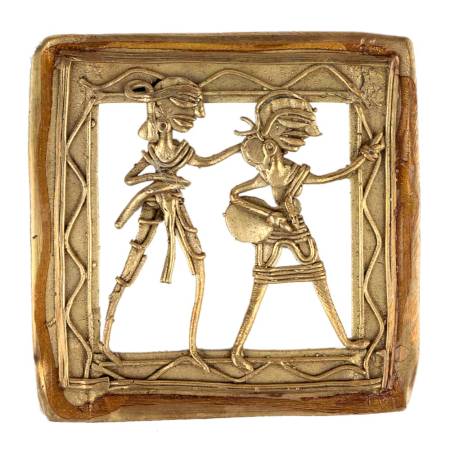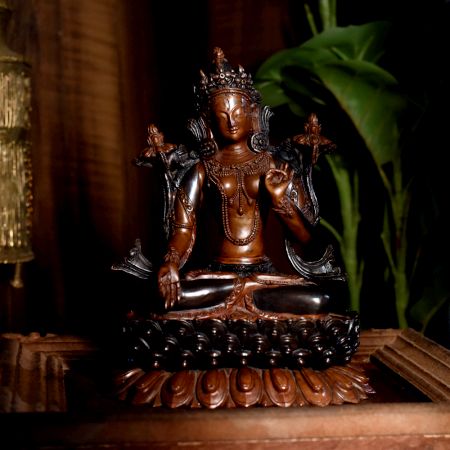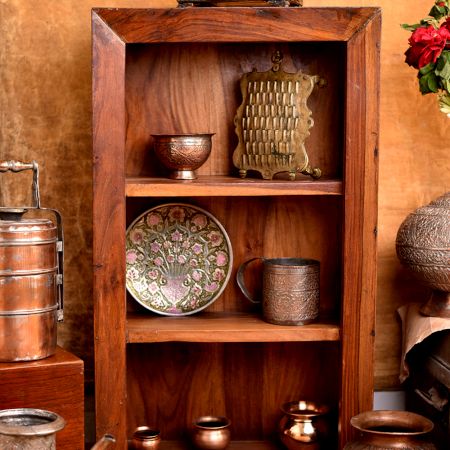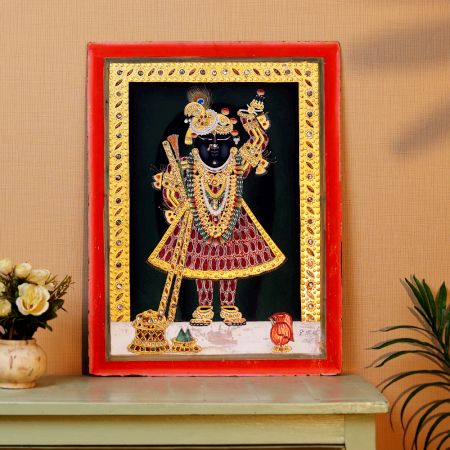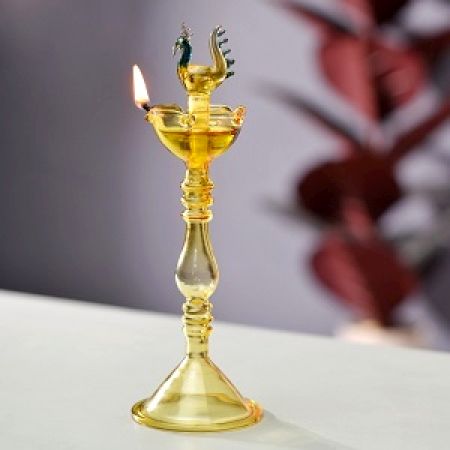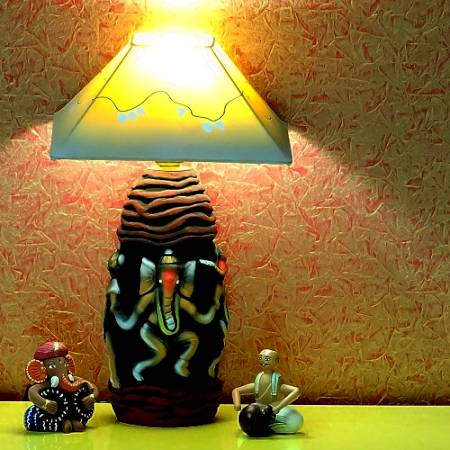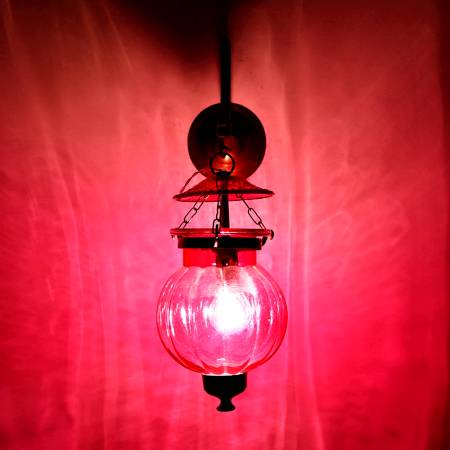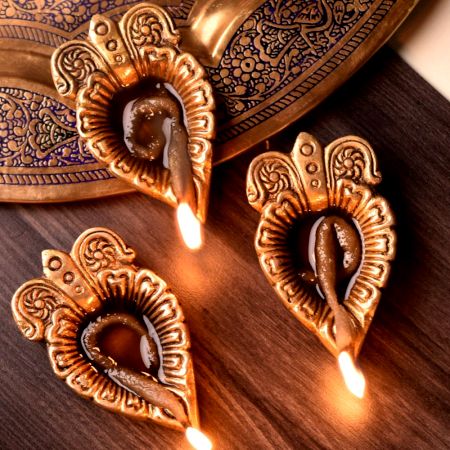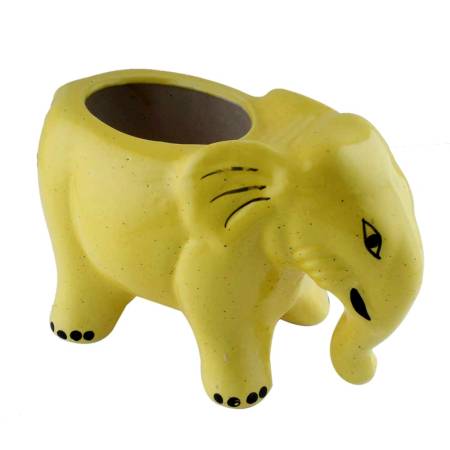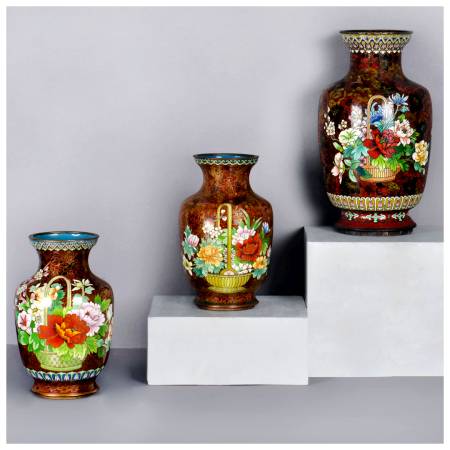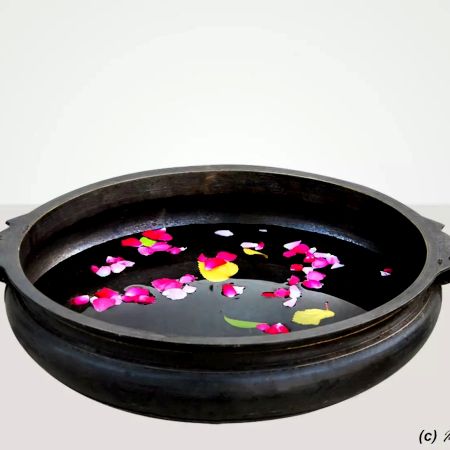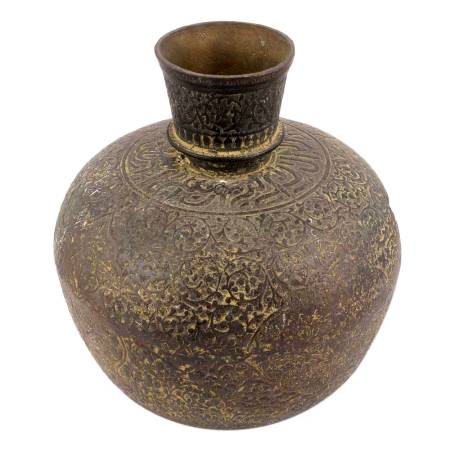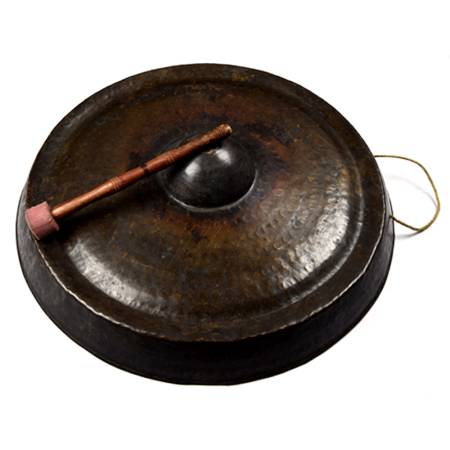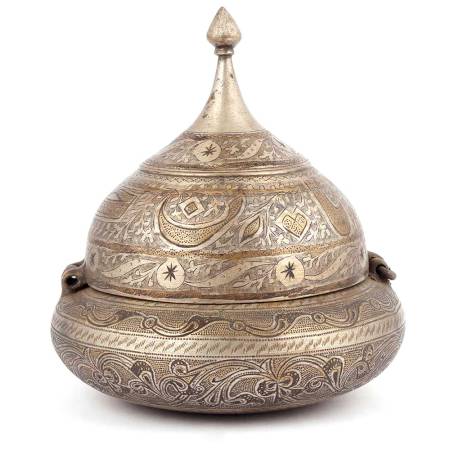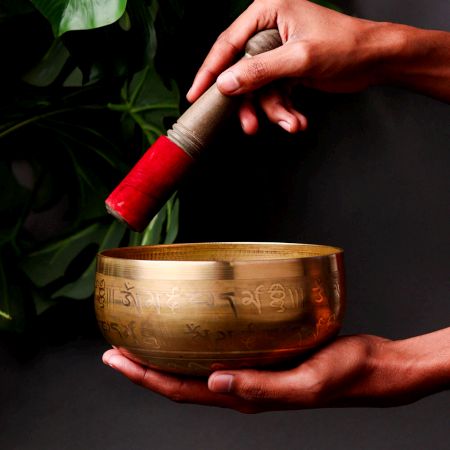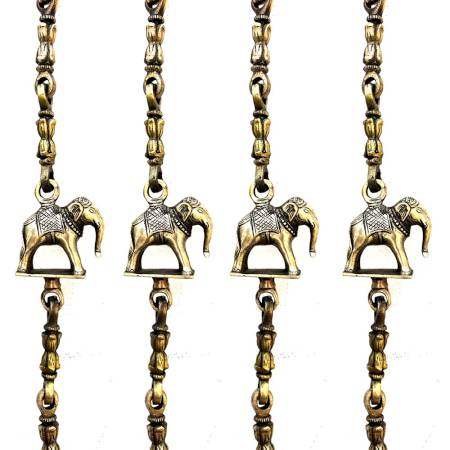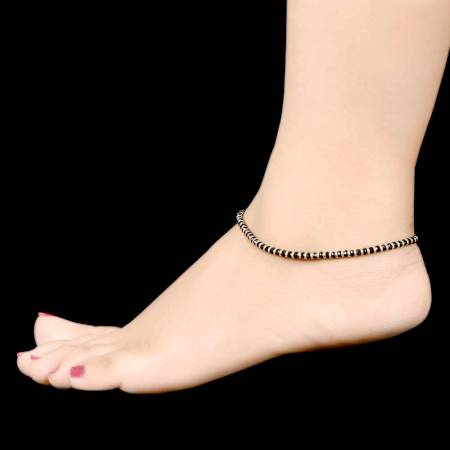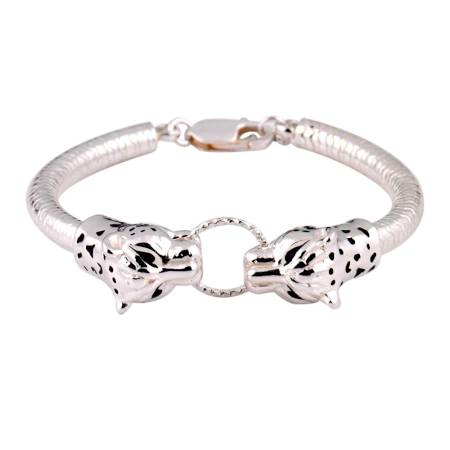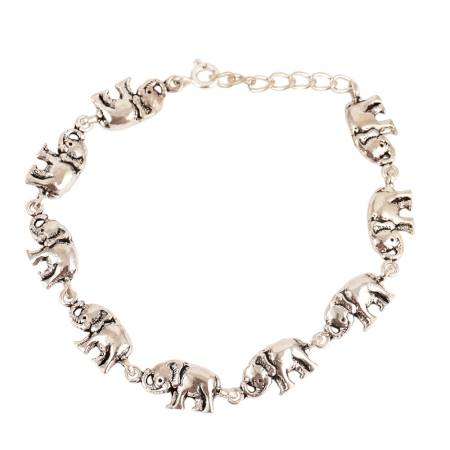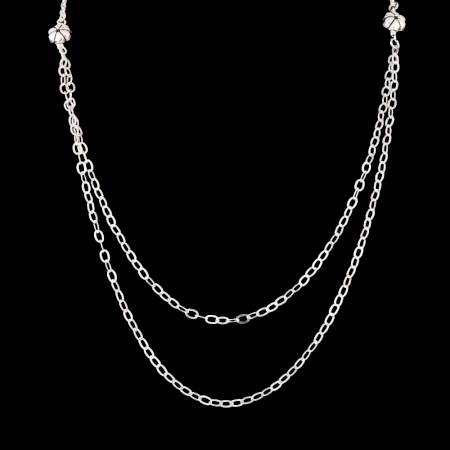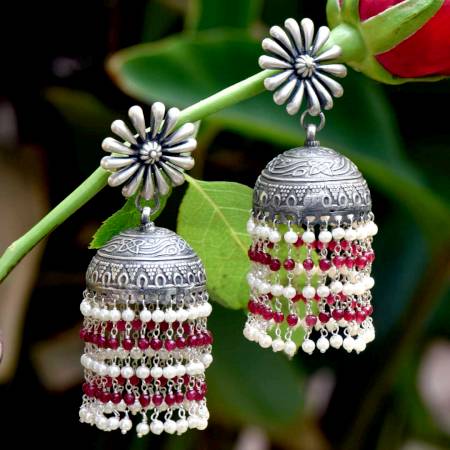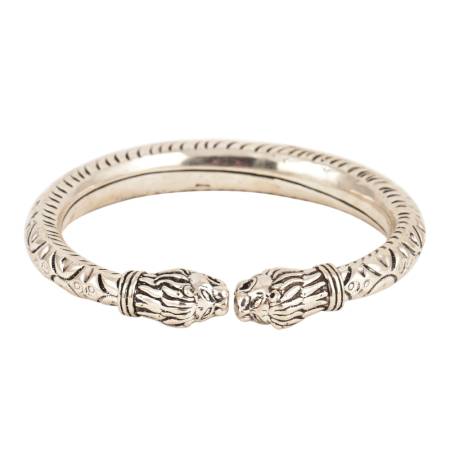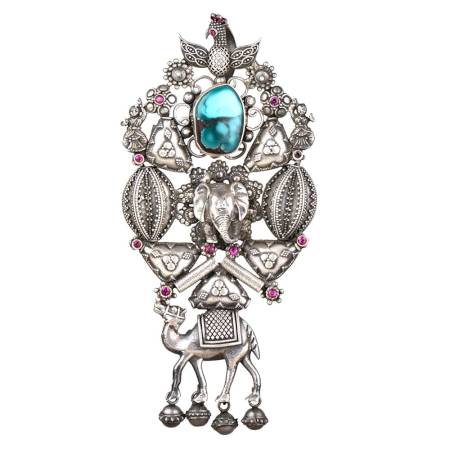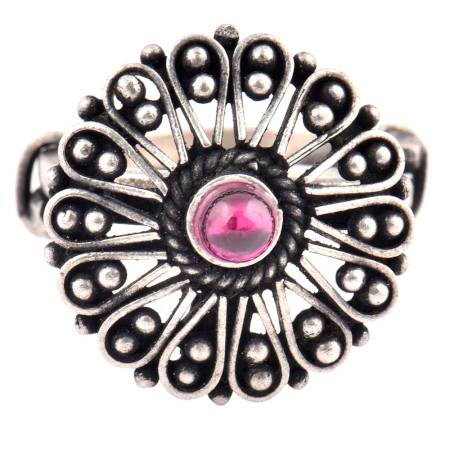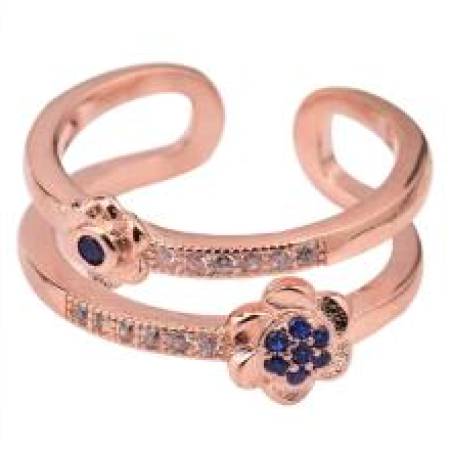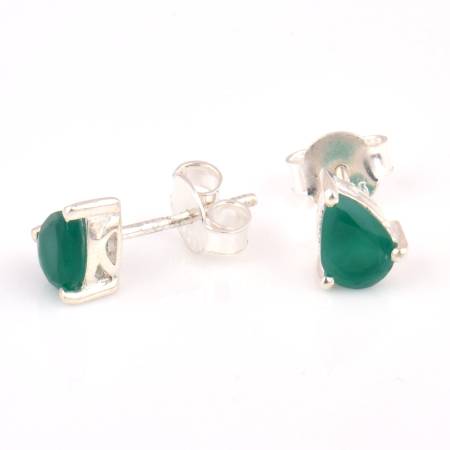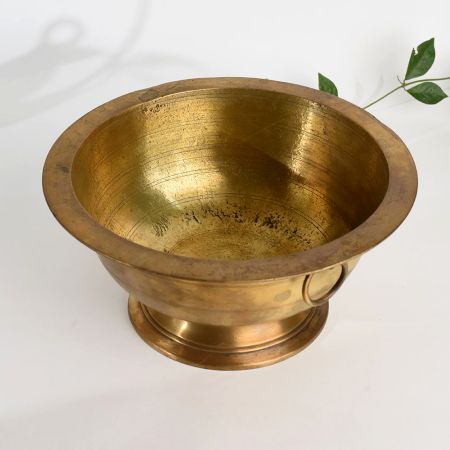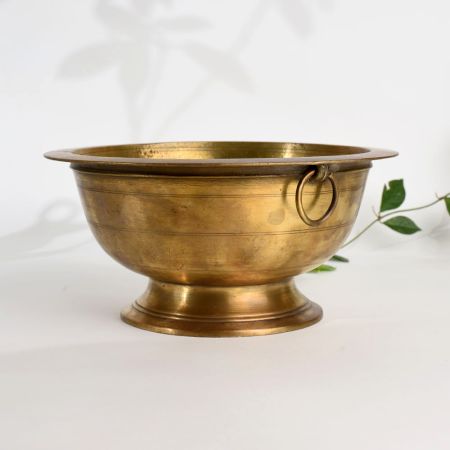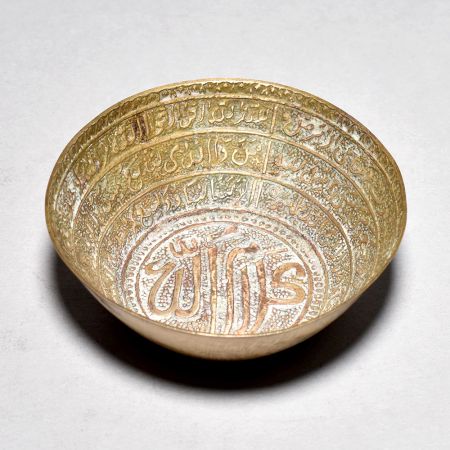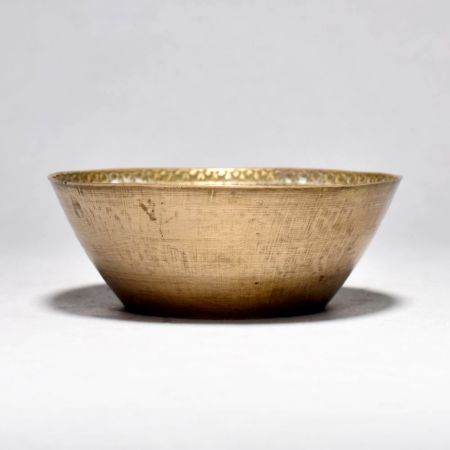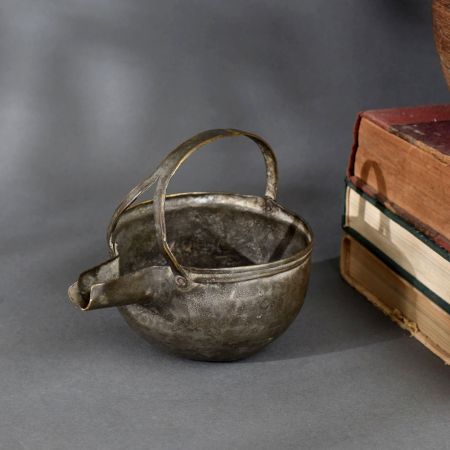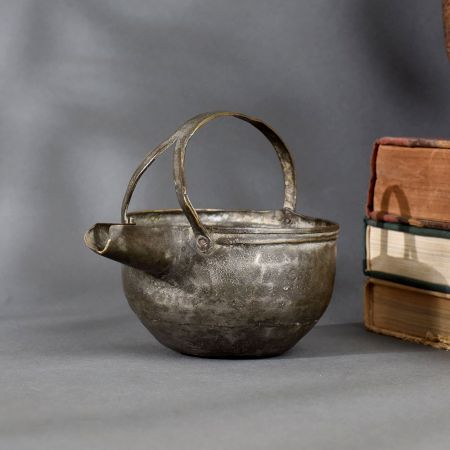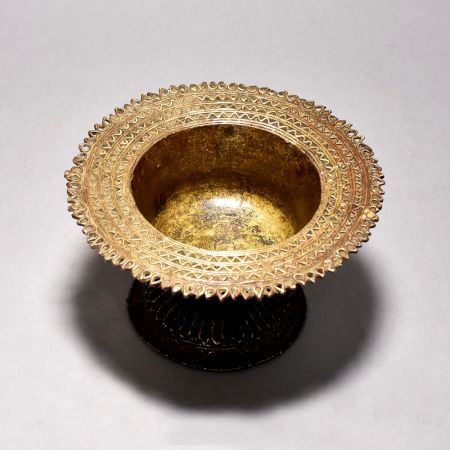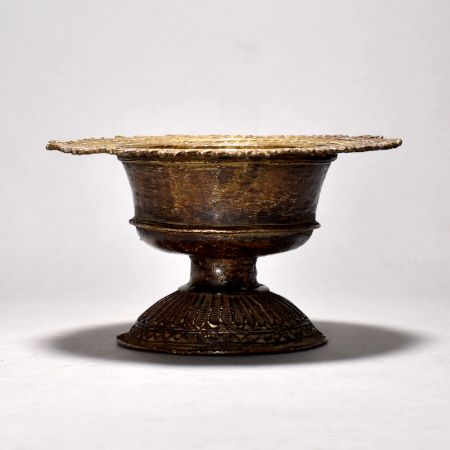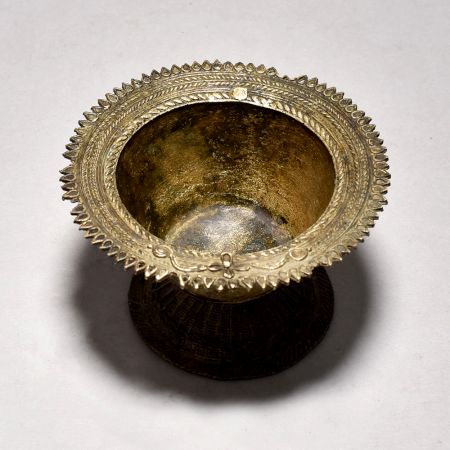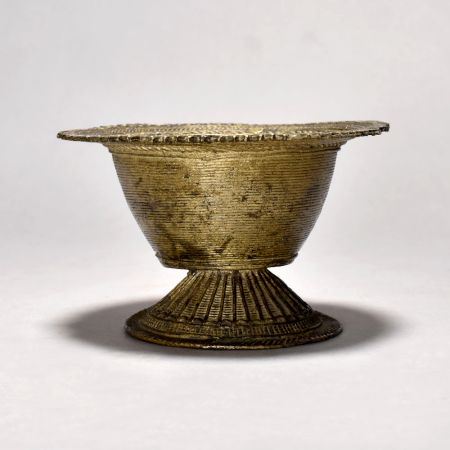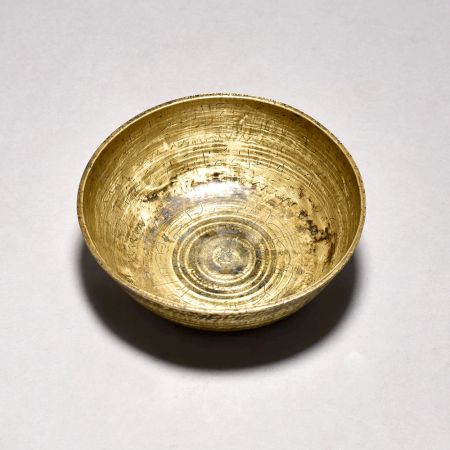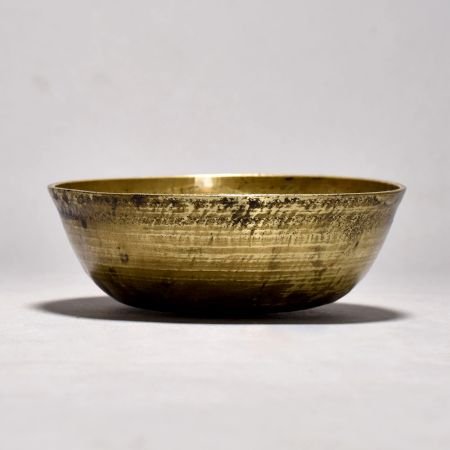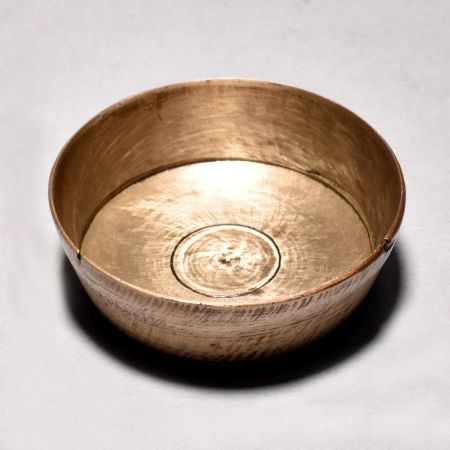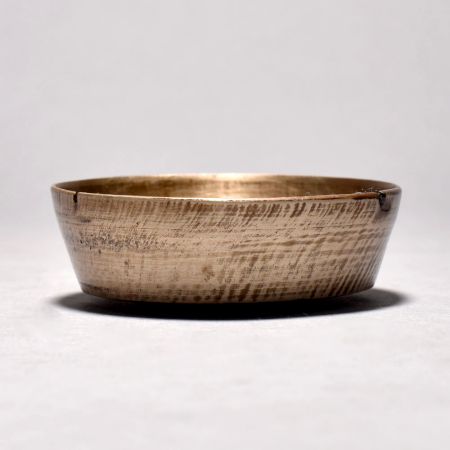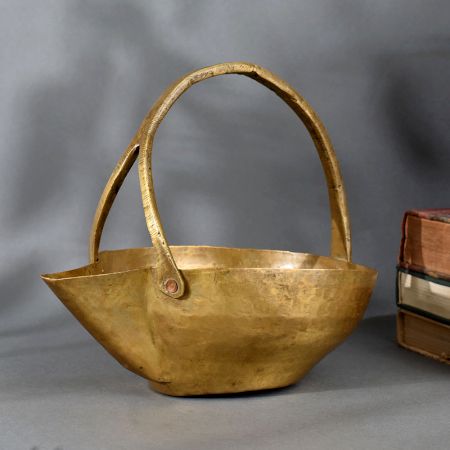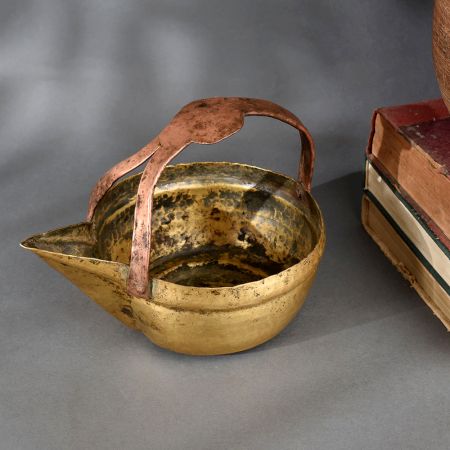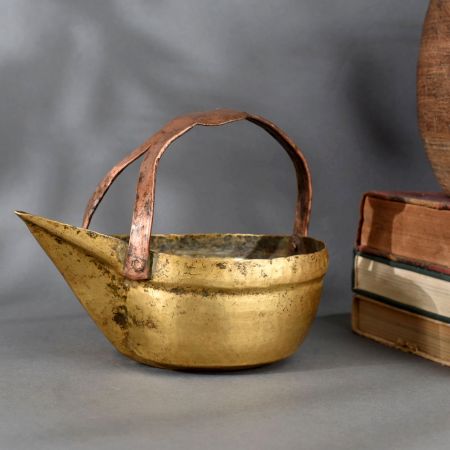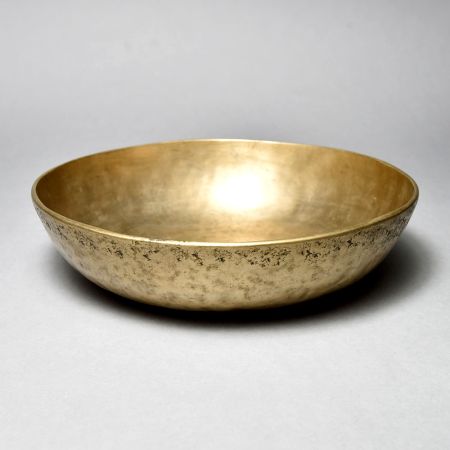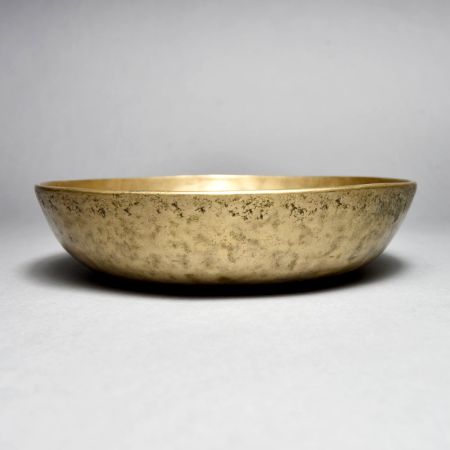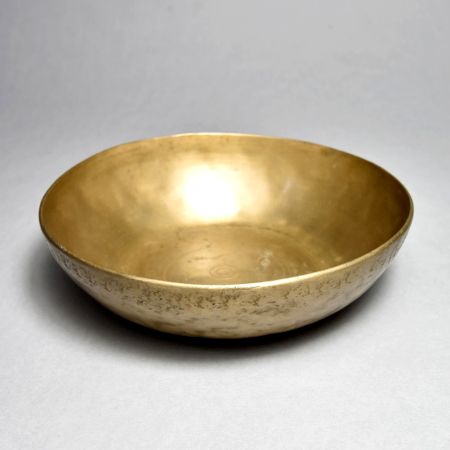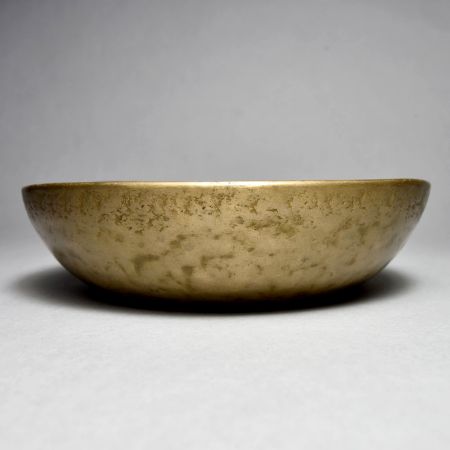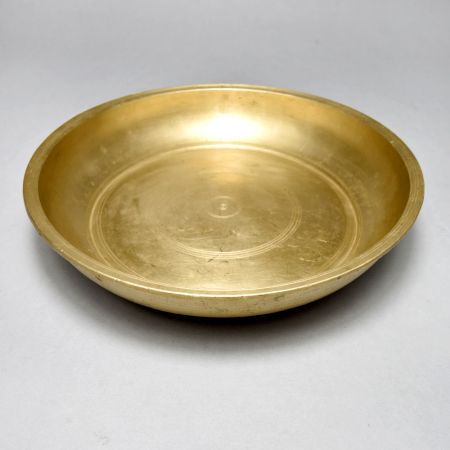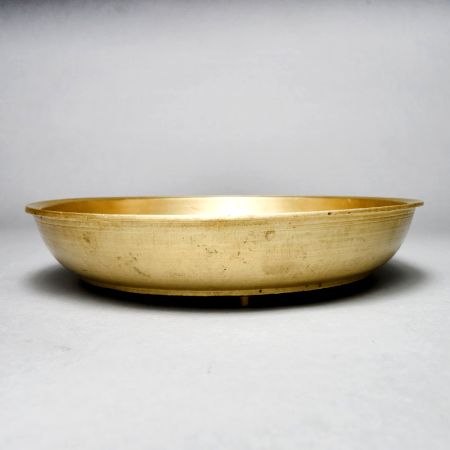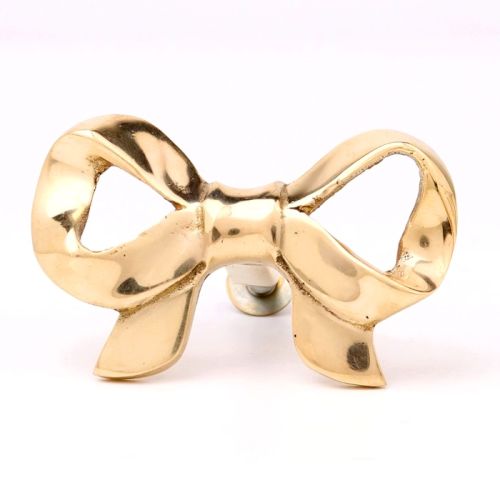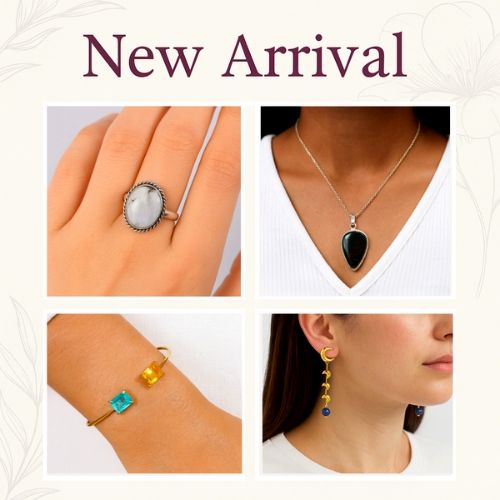-
Vintage Brass Serving Pot Traditional Handcrafted Vessel with Handle for Rustic Kitch...
- ₹ 1,700.00
-
Only 1 left
-
Vintage Brass Copper Serving Pot Traditional Handcrafted Water Vessel for Temple
- ₹ 3,700.00
-
Only 1 left
-
Vintage Brass and Copper Serving Pot Handcrafted Water Vessel with Handle and Spout
- ₹ 3,700.00
-
Only 1 left
Buy Vintage Bowl Online In India
The brass and copper bowls are making a comeback, and that too for the best. The tried and tested metals that once formed the essential part of the Indian kitchen area today regaining their lost popularity and grabbing the new generation's attention. Each of these bowls is imbibed with layers of stories and brings out the extensive craftsmanship and designs that are painfully inculcated into the development process. These old utensils further carry with them threads of family history and ancient wisdom as these were once the core part of the wedding trousseau.
Irrespective of its prestigious history, each of the Vintage Bowl that you buy will bring in a tinge of nostalgia and take you to the stories of Indians of the bygone era.
What is a vintage bowl and where did it originate?
A vintage bowl is more than a utilitarian vessel—it’s a story held in shape, glaze, and time. Typically 20 years or older, vintage bowls often trace back to specific eras like the Victorian period, Art Deco age, or mid-century modern. In India, their origin can be tied to regional crafts—from brass bowls of Rajasthan to ceramic pieces from Khurja and blue pottery of Jaipur. Globally, vintage bowls emerged from utilitarian necessity—China’s porcelain mastery, Japan’s wabi-sabi aesthetic, or Europe’s delicate fine bone china. These bowls weren’t just used for eating; they served offerings, rituals, and family gatherings, thus embedding cultural and emotional value into their very design. Each scratch, patina, or faded hue echoes a lineage of use, love, and living. A vintage bowl isn’t bought—it’s inherited, rediscovered, and re-loved.
How is a vintage bowl different from modern or contemporary bowls?
Vintage bowls differ from modern or contemporary ones in soul, story, and craft. While modern bowls prioritize sleekness, uniformity, and often mass production, vintage bowls reflect the imperfections of human hands. They carry a tactile presence—a certain weight, chipped edge, or hand-painted quirk that reveals time’s gentle touch. Contemporary designs may lean into minimalism or industrial finishes, but vintage bowls often wear rich glazes, floral imprints, or ornate carvings. There’s an intimacy in how they were made—kiln-fired slowly, sometimes sun-dried, passed down rather than bought. In contrast, modern bowls are made for convenience, stackability, and Instagrammability. A vintage bowl might not match your dinner set—but it tells its own tale. It stands apart, not just because it’s old, but because it feels lived in. It offers warmth and nostalgia, something modern ware often leaves behind in pursuit of uniform perfection.
What are the different styles or types of vintage bowls?
Vintage bowls come in a rich array of styles that reflect regional identities, material legacies, and artistic movements. There’s the hand-painted porcelain of China, often featuring dragons, cherry blossoms, or intricate blue-and-white motifs. Japanese vintage bowls lean toward earthy tones and asymmetrical forms, echoing the philosophy of wabi-sabi. In India, we find bell metal katoris from Odisha, engraved brassware from Rajasthan, and glazed ceramic from Khurja. European styles include Victorian floral porcelain, Art Deco glass bowls, and rustic enamelware. American vintage styles—like Depression glass or Pyrex nesting bowls—carry a mid-century charm, often in pastel hues or atomic patterns. Each style has a personality: ceremonial, everyday, festive, or heirloom. Some are wide and shallow for serving, others deep and narrow for soups or rice. The diversity is not just in design but in the very context of use—rituals, kitchens, markets, or temples. Each style holds a memory of function and culture.
What materials are commonly used in vintage bowls?
The material of a vintage bowl reveals not just its age, but the cultural and ecological consciousness of its time. Common materials include ceramic, porcelain, glass, brass, copper, and wood—each with distinct textures and regional relevance. In India, vintage bowls were often made from bell metal, brass, or terracotta, known for their durability and spiritual significance. European and East Asian bowls leaned toward porcelain or bone china, prized for their delicacy and translucency. Depression-era American glass bowls—colored or clear—became staples in the 1930s and 40s. Wooden bowls, carved by hand, were common in rustic or tribal settings, while enamelware offered affordability and charm. Unlike modern plastic or silicone, these materials aged gracefully. Their patina, discoloration, or glaze cracking only adds character. Each bowl, based on its material, behaves differently with time—some oxidize, others crackle, and many retain a warmth that plastic could never emulate.
What motifs or designs are common on vintage bowls?
Vintage bowls are adorned with motifs that often mirror the ethos of their era or the beliefs of a culture. Indian vintage bowls frequently display lotuses, peacocks, and geometric mandalas—symbols of prosperity, beauty, and cosmic balance. Persian-influenced floral vines, Mughal engravings, and tribal etchings also appear. In East Asia, blue-and-white porcelain from China shows dragons, clouds, and landscape scenes, while Japanese bowls may carry koi fish, bamboo, or cherry blossoms—each tied to folklore or seasonal transitions. European designs range from Rococo roses and gold leaf accents to Art Nouveau curves and Deco-era geometrics. Some Depression-era American glass bowls exhibit stylized flowers or sunburst patterns in soft pastels. Beyond design, the wear itself becomes a motif—crazing lines, faded hues, and chipped rims that speak of hands held, tables served, and memories made. These designs aren’t trends—they are storytelling etched in clay and glaze.
Where can I buy authentic vintage bowls online?
Finding authentic vintage bowls online requires a mix of curiosity, discernment, and a good eye for details. Trusted platforms include Etsy, eBay, and 1stDibs, where individual sellers and antique curators list unique finds with historical context. For Indian vintage bowls, Indianshelf, RusticByNature, and ThePostBox often feature curated collections with regional relevance. Chairish, Rejuvenation, and Revival Home specialize in restored and collectible decor, including vintage kitchenware. It’s essential to read descriptions closely—look for signs of age like patina, glaze crazing, or hand-stamped marks. Compare photos, ask questions about origin and era, and avoid replicas passed as originals. Instagram vintage decor pages and local e-thrift stores also offer surprising finds, often with stories. A true vintage bowl is less about perfection and more about presence—how it feels, how it’s described, and how it fits into the ongoing story of your home.
How can I incorporate a vintage bowl into a modern kitchen or dining setup?
A vintage bowl can soften a modern kitchen, bringing soul to steel, and warmth to white countertops. Use it as a statement centerpiece—perhaps filled with fruits, fresh herbs, or potpourri. Place it near a window for natural light to enhance its glaze and textures. In open shelving, mix it with neutral-toned ceramics for contrast. You can also use vintage brass or copper bowls for serving dry snacks, festive desserts, or as water bowls during special meals. Their tactile charm pairs beautifully with linen napkins or wooden boards. If your aesthetic is minimalist, let the bowl be your singular accent—a pop of history amid contemporary calm. And if you’re more eclectic, mix it boldly with patterned plates or rustic elements. A vintage bowl doesn’t demand attention—it earns it. Its presence in a modern setting is not just decorative, but a bridge between generations of utility and design.
How are vintage bowls preserved and celebrated today?
Vintage bowls are preserved not just as antiques, but as echoes of culture, craftsmanship, and memory. Many collectors maintain them using gentle, non-abrasive cleaning methods—avoiding dishwashers, harsh soaps, or extreme temperatures. Ceramic and porcelain pieces are often wrapped in cloth and displayed in cabinets away from direct sunlight to prevent glaze fading. Museums and cultural centers showcase them to highlight historical daily life. In homes, they’re celebrated as heirlooms—passed through generations or repurposed with reverence. Some are used only on festive occasions; others live quietly as altar bowls, potpourri holders, or kitchen accents. Online decor communities and Instagram curators bring them back into trend, educating people about their origin and beauty. Workshops, vintage markets, and slow-living movements have reignited appreciation for these bowls—not as relics, but as sustainable, storied alternatives to mass production. In essence, vintage bowls are celebrated as living memory—useful, beautiful, and deeply personal.
How is vintage Indian bowl culture linked to sustainability?
Vintage Indian bowl culture embodies sustainability long before the term became trendy. Traditionally crafted from materials like bell metal, copper, terracotta, or teak—these bowls were built to last, to age with grace rather than be discarded. They weren’t seasonal buys; they were lifetime companions. The practice of inheriting kitchenware, polishing metalware with natural agents, and repurposing old bowls as storage or ceremonial vessels reflects a circular approach to consumption. Unlike today’s disposable culture, every item in an Indian kitchen was used mindfully and passed down. Regional crafts supported local artisans, minimized carbon footprints, and relied on biodegradable or recyclable materials. By returning to vintage Indian bowls—whether sourced or inherited—we engage in slow living and conscious decorating. It’s not just about aesthetics; it’s about respecting resources, reviving local crafts, and honoring the past without burdening the future. In a world of excess, vintage is our quiet resistance.
What are the best vintage Indian bowl gift ideas?
When it comes to vintage Indian bowl gift ideas, think timeless, functional, and rich in culture. A brass urli bowl, often used in traditional homes with floating flowers or candles, is not just beautiful but meaningful. Copper spice bowls, especially the hand-hammered ones with a patina, make for excellent gifts for those who love cooking or hosting. Old ceramic pickle bowls with floral hand-painted patterns evoke nostalgia and are perfect for someone who cherishes heritage in everyday objects. You could also consider vintage katori sets, especially in bell-metal or kansa, which were once staples in Indian kitchens. Pairing these bowls with a handwritten note on how they’re traditionally used adds a personal and cultural touch. Whether for a housewarming or a festive occasion, these bowls carry stories—of homes, kitchens, and traditions—and that’s what makes them truly memorable gifts.
How can I identify an authentic vintage bowl?
Identifying an authentic vintage bowl requires observing details that speak of time, craftsmanship, and wear. First, examine the material: aged brass, copper, ceramic, or enamel tend to show patina, minor scratches, or discoloration that develop naturally over decades. Look for signs of handcrafting—irregularities in shape, brush marks in paint, or hand-hammered textures often signal authenticity. Hallmarks, maker’s stamps, or regional engravings can also hint at origin and age. Trust your touch—older materials feel different: heavier, rougher, and more grounded. Another tip is to notice usage marks—stacking rings, fading glaze, or even residue in hard-to-clean crevices. These are not flaws but signs of genuine use. If it feels too perfect or shiny, it might be a replica. Lastly, context matters. Items sourced from heritage markets or old households are more likely to be authentic than mass-produced items styled to “look” vintage.
How do I clean and maintain a vintage bowl?
Cleaning a vintage bowl is more about care than cleansing. Whether it’s brass, ceramic, or enamelware, avoid harsh chemicals and scrubbers. For metal bowls like copper or brass, use a soft cloth with a natural cleaner—lemon and salt paste works wonders. Gently rub, rinse with warm water, and dry immediately. For old ceramic or enamel pieces, use mild soap and a soft sponge. Avoid soaking them too long, especially if there are cracks, as water can seep in and cause damage over time. Don’t use a dishwasher—hand-washing is best. Store them in dry areas, preferably with soft padding if stacking is necessary. If your bowl is decorative, you can apply a little mineral oil on metal to retain shine. Ultimately, the key is to clean gently, use sparingly, and display proudly. These aren’t just bowls—they’re fragments of time that deserve a gentle touch.
How old does a bowl need to be to be considered “vintage”?
A bowl is typically considered “vintage” if it’s at least 20 to 30 years old. But age alone doesn’t define it—style, design, and cultural relevance play a role too. For instance, a hand-painted ceramic bowl from the 1980s might be vintage today, especially if its design echoes a particular era or regional art form. In India, bowls used in traditional kitchens—like kansa or brass katoris passed down through generations—are vintage not just by age but by their timeless charm. If the piece reflects a design trend, technique, or material that has faded from modern production, it adds to its vintage value. Unlike antiques, which must be over 100 years old, vintage items often sit at the intersection of memory and function. So, when you hold a bowl that reminds you of your grandmother’s kitchen, even if it’s “just” from the ‘70s, it carries vintage weight.
Can I use vintage bowls for everyday use or serving?
Yes, but with mindfulness. Vintage bowls—whether ceramic, brass, or enamel—can absolutely be used for everyday serving, especially if they’re in good condition. However, it’s important to understand their material and history. For instance, old brass or copper bowls are best used for dry or decorative items unless you’re sure they’re food-safe and well-maintained. Vintage ceramic bowls can be used for serving, but avoid microwave or dishwasher use, and be cautious with very hot or acidic foods if there are visible cracks. Enamel bowls are durable but prone to chipping—use them for salads, snacks, or dry dishes rather than boiling items. If a piece holds sentimental value, you might want to rotate its usage or reserve it for special occasions. In short, vintage bowls are functional art—use them, honor them, and let them become part of your daily rituals without stripping away their soul.
What’s the difference between vintage and antique bowls?
The distinction lies primarily in age and historical context. A bowl is considered vintage when it’s at least 20 to 30 years old but not yet a century old. These pieces often reflect specific design styles from the mid-20th century, like floral enamelware from the 1960s or brass kitchenware from the ‘80s. In contrast, an antique bowl is typically 100 years or older and holds greater historical significance. Antique bowls often feature older craftsmanship methods—like hand-lathing, etching, or regional motifs that have faded from modern design. Think of a hand-painted blue pottery bowl from colonial Jaipur or a Mughal-era silver bowl—these are antiques. Vintage, however, often carries nostalgia—items from your parents’ or grandparents’ kitchens. Both have value, but while antiques are preserved for their rarity and age, vintage pieces strike a balance between use and memory. Understanding this helps in appreciating both categories meaningfully.
Are enamelware and ceramic vintage bowls safe for modern use?
Generally, yes—but with caution. Vintage enamelware and ceramic bowls were made before modern safety standards, so it’s important to inspect them carefully. Avoid using chipped or cracked enamel bowls for serving food, as exposed metal can rust or leach. Some older enamelware may contain lead-based paints, so testing or using them for decorative purposes might be safer. For ceramic bowls, check the glaze—if it’s cracked or discolored, it could be porous and potentially unsafe for acidic or hot foods. Bowls used only for serving (not cooking or reheating) are usually fine, especially if you clean and dry them well after use. Many people today use vintage enamel or ceramic pieces for dry snacks, salads, or fruit. You can also repurpose them as planters or storage bowls. Just remember—these bowls weren’t made for dishwashers or microwaves. Hand-wash and handle with care, and they’ll last beautifully.
How do I clean and care for old vintage bowls without damaging them?
Start by understanding what the bowl is made of. If it’s brass or copper, avoid steel wool or harsh chemicals. Instead, use a gentle mixture of lemon juice and salt or baking soda with vinegar. Rub softly, rinse, and dry with a soft cloth. For old ceramics or enamelware, use mild dish soap and a soft sponge. If there are any cracks or crazing in the glaze, avoid soaking them, as moisture can worsen the damage. Never use the dishwasher—always wash by hand. Store them in a dry place and avoid stacking too tightly. You can place a cloth or soft paper between stacked bowls to prevent scratching. For display bowls, occasionally dust them and apply a touch of mineral oil for metals to keep the sheen. The key is to preserve their essence without scrubbing away their history. Each mark tells a story—don’t erase it, just protect it.
Why are the Vintage Bowls making a comeback?
Brass (also called pital) is an alloy of copper and zinc that helps to retain a large part of the cooked and served nutrients. Eating food from the Vintage Brass Bowl means better immunity and strength. What's more, the brass negates the alkalinity of the food. It makes it safe, aromatic, and healthy for your whole family. By investing in brass and copper utensils, you can carry the ancestors' legacy and help the upcoming generations connect with their roots and achieve the best health.
Not too long ago, brass and copper utensils formed an integral part of every Indian home and were designed by skilled craftsmen called Kalaigars. These rural artisans used their extensive experience and skills to craft the vessels and then gave them a light tin coating to make them suitable for cooking. However, the dwindling demand for these bowls meant that the craftsmanship was lost with time. The influx of aluminium metal that was easy to use and clean made these elaborately decorated bowls outdated. Many of these vintage items gathered dust and neglect as their owners thought the latest metals were much more practical.
However, with our extensive and tastefully curated Vintage Bowl collection, you can bring the ancient times back and help your guests experience luxury and royal dining experience. Many of the nation's top restaurants are also realizing the beauty of these metal crafts and have revived these with a motive of carrying the traditional for the future.
These metals have been in use for numerous years and bring ancient Indian wisdom, sustainability, and durability. These are one of the most practical and sustainable products available in the market today. What's more, the food that you put in the Vintage Bowl tastes entirely different from a traditional one. These bowls offer natural micronutrients and infusions that help make your food more nutritious, wholesome, and finger-licking.
What makes our collection of Vintage Bowls the Best in the Nation?
Brass was one of the most extensively used metals by our ancestors. The same carries huge similarity with copper, yet there are slight dissimilarities as well. The copper infuses the healthiest nutrition into the liquids stored in it, yet these are not practical for cooking and boiling. Brass uses both copper and zinc and achieves its stunning shades like red and yellow. The item has been extensively used in decoration and pooja items.
Since brass is considered pure, the food and drinks stored inside these can help boost your immunity by using principles of natural detoxification. As a result, you can also attain the best health and wellness regimen by merely shifting to these Vintage Bowls instead of the modern dining options. Since these are designed using traditional ancient wisdom, the Vintage Bowl will rarely gather rust.
Elements like copper and brass are way more safe and ideal when compared to plastics and polymers. These also help to control the burning sensation in the body and control aggressive behaviour. It also helps to increase the hemoglobin count while improving the condition of the skin.
The copper and brass Vintage Bowl easily reacts to salt and acidic foods, especially when heated. As a result, you can retain the original nutrition of the food that you eat. It helps to give you an added edge over other variants used for dining and serving.
Since brass is considered extremely auspicious, the Vintage Bowl sold by us can be used to work as a planter. When placed on the entry of your home, these can instantly lighten up the house's mood. It creates a positive impact on your home decor and makes it appear more welcoming and elegant. Furthermore, brass products are scientifically validated to enhance the fragrance of the flowers, especially when infused with water.
For More Products - Appe Maker | Vintage Brass Cups | Vintage Cooking Pot | Vintage Nut Crackers | Old Milk Container | Vintage Tea Pot | Vintage Samovar |
